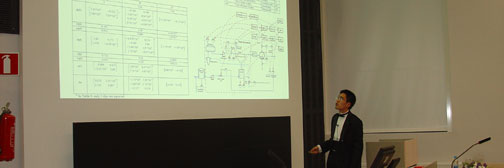| | Year 2010
Markus LindbergThe Generation of Weather Messages in Automatic Weather Stations
In order to make accurate weather forecasts, national and international weather forecast centers need to know the initial state of the atmosphere as accurately as possible. For this purpose, the weather stations around the world report observed weather data in full (0000, 0600,1200,1800) and intermediate synoptical hours (0300, 0900, 1500, 2100). The data are transmitted via the Global Telecommunication System (GTS), which is governed by the World Meteorological Organization (WMO). Before data can be distributed, it has to encoded.
The purpose of this work was to create example applications utilizing two code formats: SYNOP, which is the traditional coding method, and BUFR, which will be the dominating coding format in the future. The basic principles of numerical weather forecasting and the overall properties of automatic weather stations are first presented in order to provide a basis for determining what kind of data these messages should contain and how the data have been obtained. The thesis naturally also introduces the structure of these code formats.
Correct functioning of the SYNOP application is validated using simulated data and then comparing it to with actual data received from currently active stations. In order to achieve credibility, the BUFR messages are validated against the service provided by the European Centre for Medium-Range Weather Forecasts (ECMWF). As a result of this thesis, Vaisala has delivered first weather stations utilizing BUFR.
This info last modified 09 Jul 2025 - contact webmaster
|

